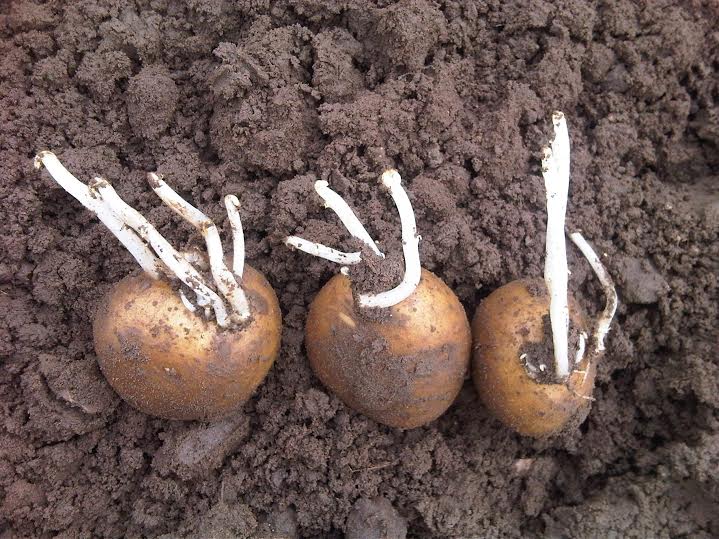
An increasing incidence of nematodes in potato field soils risks rising levels of Rhizoctonia infection hitting emerging crops, and affecting plants right through to tuber quality at harvest, warns Spud Agronomy specialist, John Sarup.
Targeting soil-borne Rhizoctonia infection with Amistar treatment during planting could successfully limit disease infection and enable plants to emerge faster and more evenly. That benefits growers’ agronomy through the season, along with tuber yield and quality for packing and processing premiums.
Speaking at a Syngenta Potato Science Live event, Yorkshire-based agronomist, Mr Sarup, reported that nematode feeding damage on root stolons allows the soil-borne Rhizoctionia pathogen to get into plants more easily - with infection resulting in stem and stolon pruning that delays emergence.
“If growth is further delayed by wet or cold soils, the effects can be severe,” he advised. “However, Rhizoctonia is a relatively weak pathogen that we have seen can be effectively controlled in the soil.
“Delayed and patchy emergence has serious implications for crop management,” he added. ”Whilst the canopy appears to recover over the season, it inevitably has a consequence at harvest, with variable tuber size and maturity.” Tubers from Rhizoctonia affected plants are also typically more cracked, split and knobbly, as well as suffering Black Scurf affecting skin finish.
Damage to root systems, from the combined effects of nematode pests and Rhizoctionia attack, is also likely to inhibit the crops’ ability to take up nutrients and water - which will have a further effect on yield. It also puts plants under greater stress that makes them more susceptible to other threats, such as Alternaria (early blight), pointed out Mr Sarup.
Syngenta Technical Manager, Douglas Dyas, highlighted nematode numbers - both free living nematodes (FLN) and potato cyst nematodes (PCN) - are believed to be rising faster in fields with shorter potato rotations, primarily driven by growers’ needs to reduce transport costs by growing on fields closer to home, and the concentration of production into fewer specialist hands. The availability of clean potato land is increasingly scarce, and needs to be vigilantly protected, he claimed.
“Shorter rotations are also associated with rising levels of soil-borne Rhizoctonia infection,” he said. Once introduced, through pathogen on seed or transfer of infected soil on machinery, the soil infection source can increase with successive cropping or residual volunteer potatoes. Changing weather conditions, with wetter, warmer winters, could also be having an effect.
Trials results
Syngenta trials last year, using Amistar in-furrow in a commercial potato crop, resulted in over 60% reduction in visible Rhizoctonia Black Scurf tuber infection, compared to untreated. Furthermore, there almost 40% reduction in Black Dot on tubers. Overall, there was an eight t/ha (16%) increase in yield, worth around £1120/ha, reported Douglas Dyas.
“The improvement in skin finish with Amistar has an immense value for the pre-pack market, where tuber quality is paramount for consumer demand and premium,” he advised. “Control of Rhizoctonia is also paramount for crop quality and consistency for tubers destined for processing.”
Mr Dyas advocated Amistar applied at 3.0 l/ha in-furrow, with an applicator mounted on the potato planter, offered the most convenient and cost effective method for control of these soil-borne disease pathogens. However, growers planting fields with a known history of skin diseases, but without an applicator, could still apply using a conventional sprayer at 6.0 l/ha overall and incorporating immediately into the soil surface prior to planting.
Furthermore, whilst Amistar targets the skin disease pathogens specifically, Mr Dyas added trials have clearly demonstrated there is an additional benefit from its use in conjunction with Nemathorin nematicide, to limit the initial feeding damage of soil pests and early Rhizoctonia infection.
